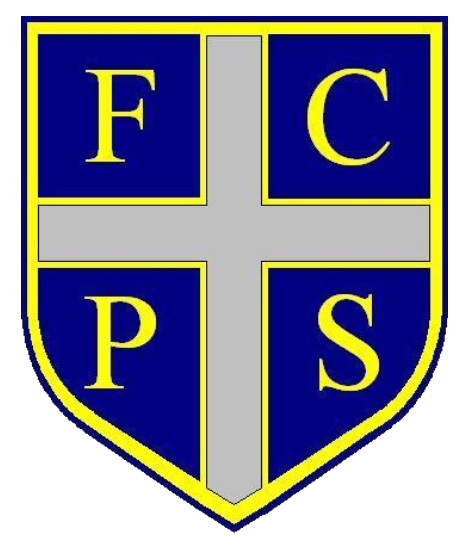Intent
At Fellside, we believe that art and design education should engage and inspire children to think innovatively and develop creative understanding. Our art curriculum provides children with opportunities to develop their skills using a range of media and materials. Across the period of their schooling, they are taught the skills of drawing, painting, printing, collage, textiles, 3D work and digital art, and they are given the opportunity to explore and evaluate a variety of approaches to art, including through exposure to a to a range of celebrated works by famous artists. Over time, children are able to develop the skill to think critically and understand how some of these works contributed to societies and their cultures through the study of some exemplary and diverse artists.
Our art and design curriculum is carefully planned and structured to ensure that current learning is linked to previous learning, and our curriculum units are built around key themes that are revisited to ensure the continued expansion of children’s knowledge, skill and understanding. For art and design, these themes are as follows:
- Artists: Evaluating, Analysing and Technical Knowledge
- Accumulation of Technical Skill
- Innovation and Application
- Creative Reflection
Implementation
Aims
The national curriculum for art and design aims to ensure that all pupils:
- produce creative work, exploring their ideas and recording their experiences;
- become proficient in drawing, painting, sculpture and other art, craft and design techniques;
- evaluate and analyse creative works using the language of art, craft and design know about great artists, craft makers and
- designers, and understand the historical and cultural development of their art forms.
Through art and design, the children learn a range of skills, knowledge, concepts, attitudes, techniques and methods of working as well as subject specific vocabulary.
We teach art & design at Key Stage 1 and 2 as a distinct subject as our experience is that when art is taught thus and in a skills-based manner, there is clearer progression and the outcomes of teaching and learning are more rigorous. Our curriculum overview and teaching units map out the themes covered each term for each year group. These plans define what we will teach and ensure an appropriate balance and distribution of work across each term and reflect the progression in skills and knowledge for each of our year groups in Key Stages 1 and 2. We work to create confident, independent artists who can articulate and value their own creative journeys.
The six disciplines of art are taught: drawing, painting, printing, collage, textiles and 3D sculpture. Each year group delivers three such disciplines and then the remaining three are taught in the next year group (so that all are taught within a phase). ‘exploring and developing ideas’ and ‘evaluating and developing work’ feature in assessment criteria for each of our curriculum units as these are ongoing skills which we consider essential in encouraging children to be innovative and take risks in their creative endeavours.
Key stage 1
Pupils are taught:
- to begin to implement the use of sketch books to record their observations and become aware that they can be used to review and revisit ideas to use a range of materials creatively to design and make products to use drawing, painting and sculpture to
- develop and share their ideas, experiences and imagination;
- to develop a wide range of art and design techniques in using colour, pattern, texture, line, shape, form and space;
- about the work of a range of artists, craft makers and designers, describing the differences and similarities between different practices and disciplines, and making links to their own work.
Key stage 2
Pupils are taught
- to develop their techniques, including their control and their use of materials, with creativity, experimentation and an increasing awareness of different kinds of art, craft and design;
- to create sketch books to record their observations and use them to review and revisit ideas;
- to improve their mastery of art and design techniques, including drawing, painting and sculpture with a range of materials [for example, pencil, charcoal, paint, clay;
- about exemplary and diverse artists, architects and designers both in history and working today.
Impact
Assessment is carried out in accordance with our Assessment Policy and we operate a key skills and knowledge approach in our foundation subjects. On-going teacher assessment ensures that skills are developed and progress is made in the area of art and design. At the end of each unit children from Years 1 to 6 are assessed against key learning skills and key knowledge that ensure we track the progress of children and monitor and evaluate their achievement.
Class teachers evaluate each child’s developing skills and knowledge evidencing from sketchbooks and other means of observation. Our children, from Key Stage 1 are encouraged to develop the habit of using sketchbooks, primarily for developing ideas for their work and for working out ideas, plans and designs; but also for recording, exploring and storing visual information which can be readily retrieved and used as reference. The class teacher can look back and reflect on the content and judge which they can use to further develop ideas, skills and understanding.
Displaying children’s work well also plays a positive part in the appraisal of the art and design work in the school; this gives it value and reminds the children what has been achieved and enables them to share and talk about their work with others. As a form of real assessment, this gives the class teacher opportunities to focus on the different ways the children may have responded to the theme or starting point. Thus, the public display of art and design (and other curriculum areas) of each year group is much more than just a way of making the school look attractive; it also demonstrates the sequence and development of what has been learnt throughout the key stages.
Curriculum Overviews
